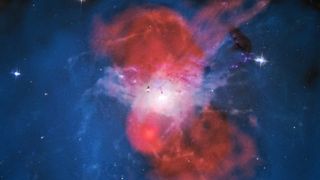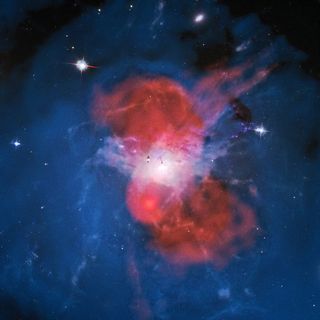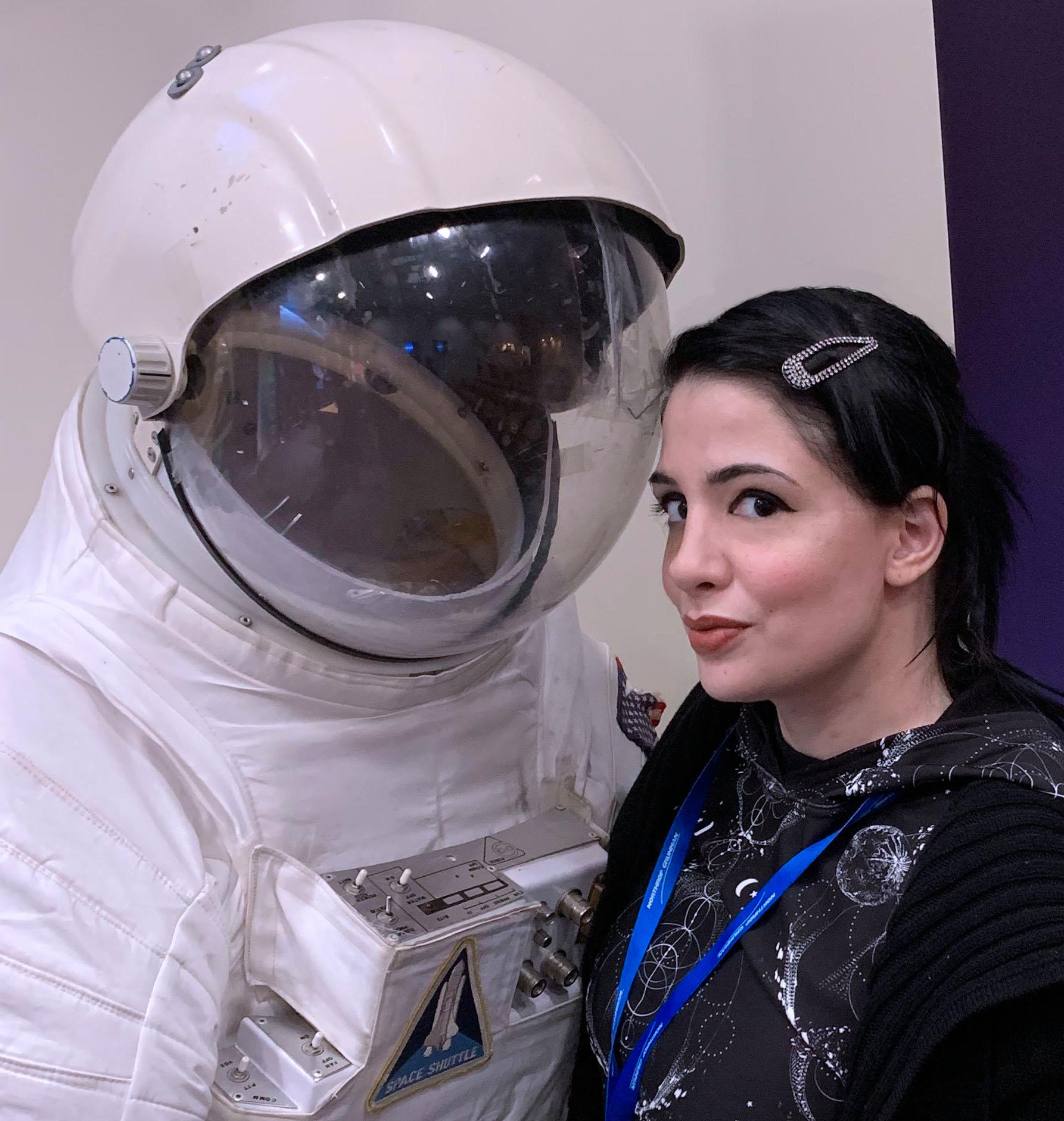Breathtaking image of galaxy cluster made by merging X-ray and radio data
Many mysteries about galaxy clusters are still out there.

A structure in the heart of the Perseus galaxy cluster can now be seen as an otherworldly display of reds and blues thanks to a new technique that involves X-ray and radio data.
This technique merges radio data from the LOFAR (Low Frequency Array) radio telescope array and X-ray data from NASA's Chandra X-ray observatory. Using both to create a composite image not only produced this new image, but, more importantly, told a team of astronomers more about the origins of the enigmatic structure.
"That combination provides a much better idea of what is going on," Ph.D. student and study lead author Roland Timmerman, of the University of Leiden in the Netherlands, said in a statement. "It's cliché, but the whole is really greater than the sum of the parts here."
Related: Strange molecules swirl around supermassive black holes, James Webb Space Telescope finds
Supermassive black holes are thought to lurk in the cores of most large galaxies. If they create something like the Perseus megastructure, whose lobes are tens of thousands of light years across, those lobes may hang around for as long as hundreds of millions of years. The structure in the image is thought to have been created by jets of gas spewed by supermassive black holes in some of the galaxies of the Perseus cluster. Material from such jets then heated surrounding gas, creating the massive lobes seen in the image.

LOFAR is the largest radio telescope on Earth and headquartered in the Netherlands. Since it opened in 2010, it has had additional antennas installed throughout Europe to boost its resolution, and that's why it can catch high-resolution glimpses of objects and phenomena, such as radio waves, at extremely low frequencies. There were no radio wave observations strong enough to align with Chandra's X-ray vision before more antennas were added to LOFAR. The additional antennas finally made that, and the image above, possible.
The colors that went into this image actually indicate the types of radiation that make up the lobes (the night sky around them was imaged in visible light by NASA's Hubble Space Telescope). Radio waves picked up by LOFAR are in red, while the high-frequency X-rays Chandra observed are in blue. Both would otherwise be invisible.
Get the Space.com Newsletter
Breaking space news, the latest updates on rocket launches, skywatching events and more!
Many mysteries about galaxy clusters are still out there. Using the technique Timmerman's team came up with could now allow astronomers to put together similar composite images, which can demystify more about how these clusters evolved, from star births to supernovas to collisions between entire galaxies.
The research is described in a paper accepted for publication in the journal Astronomy & Astrophysics.
Follow us on Twitter @Spacedotcom or on Facebook.
Join our Space Forums to keep talking space on the latest missions, night sky and more! And if you have a news tip, correction or comment, let us know at: community@space.com.

